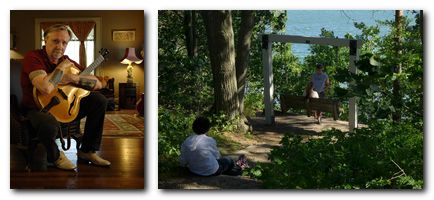People Assignment
Photographing Portraits and the Human Condition
“There is one thing the photograph must contain, the humanity of the moment.”
— Robert Frank“
"A thing that you see in my pictures is that I was not afraid to fall in love with these people.”
— Annie Leibovitz
“A portrait is not made in the camera but on either side of it.”
— Edward Steichen
“It’s one thing to make a picture of what a person looks like, it’s another thing to make a portrait of who they are.”
— Paul Caponigro
“If the photographer is interested in the people in front of his lens, and if he is compassionate, it’s already a lot. The instrument is not the camera but the photographer.”
— Eve Arnold
“I love the people I photograph. I mean, they’re my friends. I’ve never met most of them or I don’t know them at all, yet through my images I live with them.”
— Bruce Gilden
“When I say I want to photograph someone, what it really means is that I’d like to know them. Anyone I know I photograph.”
— Annie Leibovitz
“It is more important to click with people than to click the shutter.”
— Alfred Eisenstaedt
“A portrait is not a likeness. The moment an emotion or fact is transformed into a photograph it is no longer a fact but an opinion. There is no such thing as inaccuracy in a photograph. All photographs are accurate. None of them is the truth. ”
― Richard Avedon
“Your most important gear is your eye, heart and soul.”
― Marius Vieth

Cooperation or Observation
Portraits are a collaboration with the subject
The Human Condition is capturing the world as you observe it
Portrait photography can be described as the collaborative process between the photographer and the subject.
Portraits can be formal or informal, controlled within a studio or "on location."
Lighting may be artificially controlled and enhanced or you can take advantage of the "available light".
It is important to use light as a compositional element of your photographs. Establish a relationship with your subject. Remember, you are in charge. Your subject should be comfortable and not "putting on an artificial expression or pose". Direct your subject to get your best interpretation of the individual.
Photographing the human condition is a way to document lives and create a record of the world as you see it. Documentary photography usually involves a message or story related to the photographs. Photo-journalism is another example of documenting the human condition that is usually shared in some type of published document such as a newspaper or magazine. In most cases, this type of photograph does not involve the collaboration that exists in a portrait session.
The subject may not even be aware that you are including them in the photograph. "Street photography" involves capturing people in the environment, in their interactions with each other and their involvement with the world around them.
Street Photography becomes Portrait Photography when you engage the subject- ask for permission (see Bob Gates).
The Shoot:
Build on what you learned in the exposure, motion and depth of field assignment to make strong compelling images.
Portraits can have one subject or involve a whole group of people. The more subjects, the greater difficulty.
1) Shoot multiple photographs of at least four different situations illustrating the Human Condition.
2) Shoot multiple exposures of at least four different PORTRAIT (collaborative) situations.
3) From these exposures, you will submit six strong images for review. Three portraits and three of the human condition.
You should expose at least 100 images for this assignment
Remember all the skills you have learned so far. Fill the frame. Be careful with exposures. Use depth of field and selective focus to best advantage and remember... Lighting is important. Also refer to your experience of composition - filling the frame and paying attention to line, shape and space. Use motion and depth of field to make your images stand out and be more interesting.
Browse the links below of photographers noted for their work with people
Link to National Graphic guide on photographing people
What Happens to a portrait when you change your focal length?
Header images



